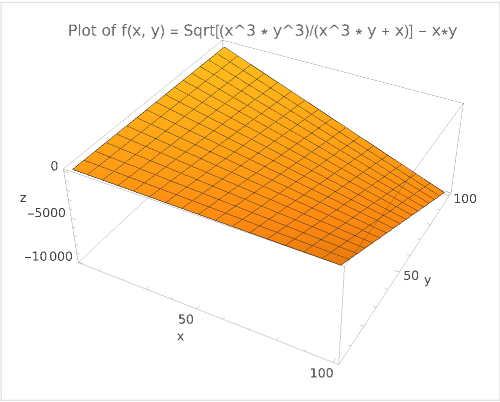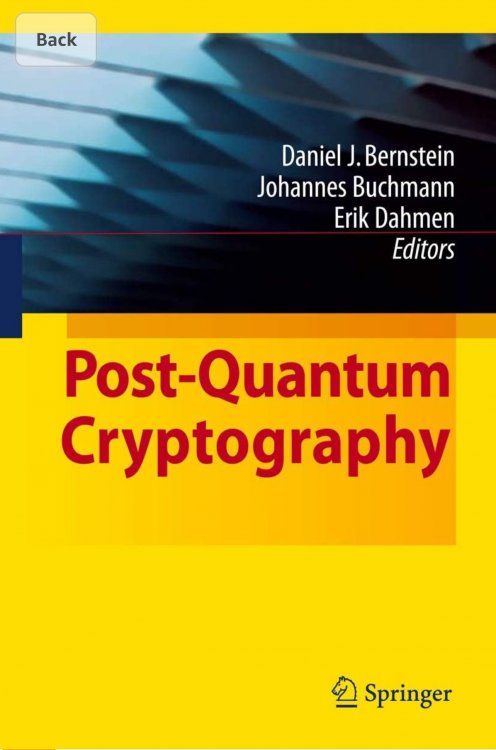-
Posts
417 -
Joined
-
Last visited
-
Days Won
1
Trurl last won the day on July 18 2022
Trurl had the most liked content!
Contact Methods
-
Website URL
http://www.constructorscorner.net
Retained
- Quark
Profile Information
-
Favorite Area of Science
applied mathematics
Recent Profile Visitors
20408 profile views
Trurl's Achievements

Molecule (6/13)
10
Reputation
-
This code works!!!!!!! Working Mathematica Code: Clear[x,p]; p=2564855351; x=3; Monitor[While[x<p, If[(x*(Sqrt[p^3/(p*x^2+x)])-p)<0.5, Print[x]; Break[];]; x+=2;]; If [x <= p, While[x<p, If[Divisible[p,x], Print[x]; Break[];]; x +=2;];], x] 3 41227
-
p = 2564855351; x = 3; Monitor[While[x <= p, If[(x*(Sqrt[p^3/(p*x^2 + x)]) - p) < 0.5, Print[x]; Break[];]; x += 2; Missing parentheses, but the logic is there. The language is Mathematica. I collaborated with another Mathematica coder. I’m not familiar with the “Monitor” class. But this class is the representation of everything I have posted. If it is the syntax I will have to consult more Mathematica coders. Attention all coders!!!
-
p = 2564855351; x = 3; Monitor[While[x <= p, If[(Sqrt[p^3/(p*x^2 + x)] - p) < 0.5, Print[x]; Break[];]; x += 2;]; If[x <= p, While[x <= p, If[Divisible[p, x], Print[x]; Break[];]; x += 2;];], x] First function corrected: p = 2564855351; x = 3; Monitor[While[x <= p, If[x*(Sqrt[p^3/(p*x^2 + x)]) - p) < 0.5, Print[x]; Break[];]; x += 2; Same as all my recent descriptions.
-
Well leaving out the x was a happy accident. It just shows again x times y = p and we are just using algebra. That is why the second part of the program used division. The first algorithm found where x value of the small factor approached zero value at y. I put the value of y at p minus x times y so it is easier to find. I could have said x at factor and y equals pnp. I said within range because there is some error with x. It is close but within error. The equation is too complex to solve for x even though it has x as the only unknown. I say approaches because I am plugging in a test value of x to find y. That is why I graphed it. I know it is not pretty math and is more of a hack. But using test values you know the area of the factors because the further away the y value on the graph is from zero the further away you are from the factor.
-
p = 2564855351; x = 3; Monitor[While[x <= p, If[(Sqrt[p^3/(p*x^2 + x)] - p) < 0.5, Print[x]; Break[];]; x += 2;]; Syntax error. Should read: p = 2564855351; x = 3; Monitor[While[x <= p, If[x*(Sqrt[p^3/(p*x^2 + x)]) - p) < 0.5, Print[x]; Break[];]; x += 2;]; That is why it wasn’t working. It was y, the second Prime factor. But we would have no way of knowing when y was reached. Multiple y by x to get p. Subtract p and the y of graph equal to zero. That y intercept is where x approaches the value of the smaller Prime factor.
-
The problem is it is Sqrt[(x^3*pnp^3)/(x^3*pnp+x)-pnp Where pnp is the constant SemiPrime. 2564855351 in this case x is the value on the axis. Where y on the graph equals zero, x approaches the smaller SemiPrime. I believe in your graphs y is variable. I am working on testing the program. But if you take p = 2564855351; x = 3; Monitor[While[x <= p, If[(Sqrt[p^3/(p*x^2 + x)] - p) < 0.5, Print[x]; Break[];]; x += 2;]; and display x when it breaks it should be within range of the smaller Prime factor. I know testing sounds simple enough but my computers and software are aging. Software upgrades faster than I do. All my software is scattered across 5 computers. And I don’t think Win7 and XP systems are safe on the internet. But that is just my computer maintenance problems. Hope this helps.
-
There are no anomalies. When you graph the equation, the x of the graph (you just graphed) equals the smaller Prime factor where y of the graph is or around zero. There are no tricks. That is why I called it Simple Yet Interesting. The code I posted was generated by ChatGPT. It simplified the equation. You should try it in Mathematica. It is not meant to be efficient but the first function should break (and print) near zero and estimate the smaller factor x. I have already posted on this. Let pnp = 2564855351 When x = 41227, the (x*y) part of equation equals 2564855365.5 https://www.scienceforums.net/topic/124453-simple-yet-interesting/page/7/#elControls_1258420_menu Hope this explains what I was attempting to do. I need to post another, larger example. If the program from ChatGPT works you should be able to modify the testing steps ( from every odd number to x+=22 or larger) The one thing that needs checking is how GPT simplified the equation. That is why I said test for lager Primes. Because 2 known Primes multiplied together will equal zero in the equation if they form a SemiPrime.
-
@Ghideon And anyone interested Yes. I am still dividing and finding a square root in my calculations. How could it be faster than the original recursive division? Probably not faster, since when you start at 3 the unknown x is closer to zero than pnp anyway. But the advantage is you don’t need to test those values in my equation that don’t occur next to zero. This zero is unique to pnp. It also occurs in sequential order. So, if you subtract the left side of the equation by pnp and it is, say 5, you know that x is smaller than the tested x at that value. I know it has many faults, but it does provide a unique graph that may contain some useful analysis. I think it will prove more useful as pnp increases in value. But it is difficult for me to test. I will try to factor the largest semi-Prime posted earlier. But that is why I posted here in the first place for help testing. I realize my algorithm isn’t faster than plain division, but that isn’t what it was intended to do. I need outside eyes because I created the algorithm and am biased, but finding semi-Primes is not the only part. Instead, it is to exploit a pattern in factorization.
-
3x+1 if odd x/2 if even So why not create a sieve of multiples of 2, 4, and 8? When x equals a logarithm of 2, 4, or 8 then x/2 repeated equals 2. 2*2*2*2… 4*4*4*4… 8*8*8*8… These 3 logarithms of 2, 4, and 8 encompass all the numbers that reduce to 2 when repeatedly divided by 2. What am I missing? Did I break the rules of the pattern? I am trying real hard not to factor semiPrimes. I did not research the problem yet. I am only working with 3x+1. I realize that this is more complex with larger numbers. I am just stating a simple example.
-
@Sensei @Ghideon I had help on this program. A good Samaritan put the code into ChatGPT and it supped-up the code. I still don’t know if it will run faster with larger Primes compared to standard recursive division. I think it gives a picture of what is going on with the factoring. x will only occur around zero on the graph. Again, I don’t know how to measure any efficiency of the program. Obviously with small Prime products (pnp), it will not show any improvement with factoring the semiprime. Again, I am breaking a resolution not to enhance RSA. But I wanted to share some final thoughts on this project I have spent great effort on. I think my next project will be Microsoft Kinect or 3D Printing. A friend bought me a book on Nichola Tesla for Christmas. It has his messages. However, the messages are encoded in puzzles and cryptograms. I thought I could write a simple Mathematica program and decode them. If the program works, I will share every detail. Here we go again. LoL. At least it’s not RSA. Even video games would be a good break from RSA. I know what you are thinking why would I give such information away. That is if you really believe in my program. I know such information is valuable, but if no one attempts to find large Primes with it I don’t know if the program even works. That is why I shared everything in the message board. I have shown my case. Please prove it right by finding large Primes. p = 2564855351; x = 3; Monitor[While[x <= p, If[(Sqrt[p^3/(p*x^2 + x)] - p) < 0.5, Print[x]; Break[];]; x += 2;]; If[x <= p, While[x <= p, If[Divisible[p, x], Print[x]; Break[];]; x += 2;];], x]
-
One of my resolutions this year is to stop trying to enhance RSA cryptography. I have been at it as early as 2006. In my first attempts, I stated that a logarithmic spiral could define a pattern in Prime numbers. I still believe this. And it is inherently feasible because logarithms already explain many patterns. But my ideas are the same in all my posts: x * y = pnp. If I had just left the equation at: x * (pnp / x) = pnp ; it wouldn’t have been helpful. I had to find a way to put y terms of x and pnp that was useful and equaled more than 1 =1. The enhanced equation still may be difficult to solve, but with only x as the unknown I could substitute x along the graph and when that value minus pnp approximately equaled zero, the value of x that caused that zero is the smaller Prime factor. Well despite the fact if you believe me or not Or if this is even useful (I believe it is useful), you could set up an equation similar to this isolating x and testing it along a graph for any pattern. It may be a challenge to put y in terms of x and pnp that only solves the desired pattern, but it would be a shot to analyze the series in ways not done before. So, as I break or fulfill my resolution, I ask even though it would still be challenging to break RSA with this method, is the method itself useful in trying to find patterns where this is no pattern? x* y = pnp x * (Sqrt[ (pnp^3/(pnp * x^2 + x) + (x^4/(pnp^2 + x) )] ) = pnp x * (Sqrt[ (pnp^3/(pnp * x^2 + x) + (x^4/(pnp^2 + x) )] ) – pnp = 0 Let pnp = 2564855351 When x = 41227, the (x*y) part of equation equals 2564855365.5 Not bad for government work.
-
Thanks tor the links 😁
-
One of my New Years resolutions is to stop trying to enhance RSA. Where is there a list of copyrighted content that is now public? The first Mickey Mouse movie now is public domain. Also, I thought that all my data analysis on crypto would benefit me in bioinformatics. Even though I am not a biology major or know much about, I thought I could still work with the statistics. Is there any online database of open source data to try and crunch and find patterns in genetics?
-
The back of the book picture I posted says it will break RSA, DSA, and ECDSA. I have yet to read the book, but it proposes alternatives to modern encryption. The previous link you posted was the first I saw that said today’s encryption was safe. I have been listening to Michio Kaku’s book. I haven’t finished but he describes quantum computers as pattern solvers. Uses like mapping dna or folding proteins. He doesn’t say we can do that currently. He does mention Google and Microsoft building prototypes.
-
I guess there is some disagreement on quantum computing. 60 minutes made it sound like it was coming out tomorrow. And there is several sources that say it will break RSA, DSA, and ECDSA. I’ve heard 40 qubits was the highest. But I believe you that it is far off. I see quantum computing as producing too much information. We are going to get an answer and it will be so complex that we will have to assume it is correct. I mean something like how you can’t prove a math theory by crunching numbers. However expanding the amount of different crypto algorithms seems awesome. BTW, I have not read this book.










